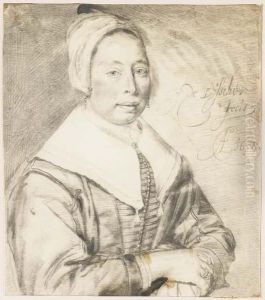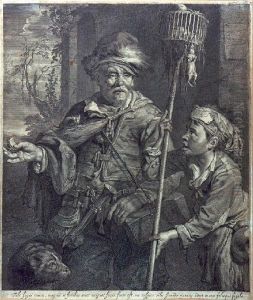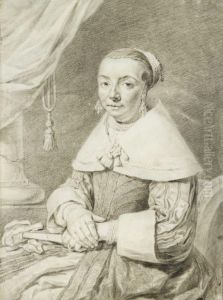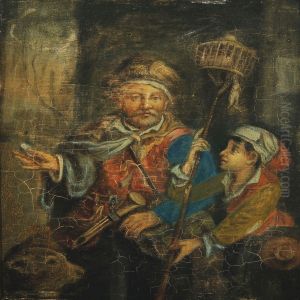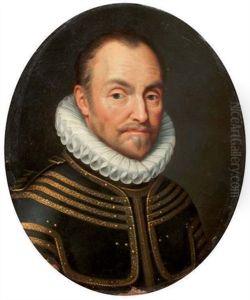Cornelis De Visscher Paintings
Cornelis de Visscher, also known as Cornelis Visscher II, was a notable Dutch Golden Age engraver and draftsman born in Haarlem, the Netherlands, in 1629. Coming from a family with artistic backgrounds—his brother Jan de Visscher was also an accomplished artist—Cornelis developed his skills in the vibrant cultural atmosphere of the 17th-century Dutch Republic. While not as widely recognized as some of his contemporaries, de Visscher is admired for his detailed and expressive engravings.
Cornelis de Visscher's work is characterized by its fine technique and attention to detail, often displaying a remarkable ability to capture textures and nuanced expressions. His subjects ranged from portraits to genre scenes, animals, and landscapes. He was particularly adept at rendering human figures and facial features, which allowed him to excel in creating portrait engravings, a popular art form of the period. De Visscher's prints were not only appreciated for their artistic quality but also for their ability to disseminate the images of notable personalities of his time.
In addition to creating original works, de Visscher also reproduced paintings by other artists, thereby contributing to the wider circulation of the styles and ideas of the Dutch Golden Age. His reproductions were so finely executed that they sometimes were nearly indistinguishable from the original paintings, highlighting his skill and precision.
Cornelis de Visscher died at a relatively young age, in 1658, leaving behind a body of work that continues to be studied and admired. His engravings are held in numerous collections and museums around the world, providing insight into the art and culture of the Netherlands during one of its most flourishing periods. Despite the brevity of his career, de Visscher's impact on the craft of engraving and the history of Dutch art is enduring.
